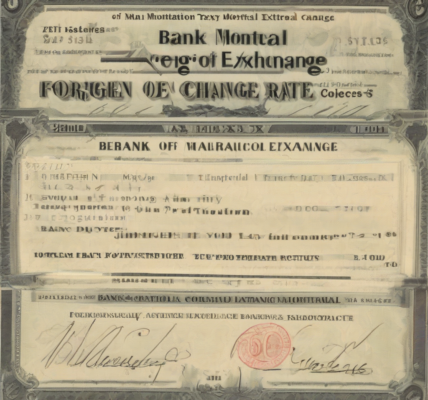Unlocking Tax Advantages: A Deep Dive into 1031 Exchange Loans
A 1031 exchange, formally known as a like-kind exchange, allows investors to defer capital gains taxes when selling an investment property. However, navigating this complex process often requires bridging the gap between selling one property and acquiring another. This is where 1031 exchange loans come into play, providing crucial financing to facilitate a smooth and tax-advantaged transaction.
Understanding the Mechanics of a 1031 Exchange
Before delving into the specifics of 1031 exchange loans, it’s crucial to understand the fundamental principles of a like-kind exchange. Under Section 1031 of the Internal Revenue Code, taxpayers can defer capital gains taxes by exchanging one investment property for another of “like-kind.” This means the properties must be of similar nature or character, typically real estate for real estate. The exchange isn’t a sale; it’s a trade, allowing investors to reinvest their capital into a new property without immediate tax liabilities.
- Key Requirements: Successful 1031 exchanges hinge on adhering to strict timelines and regulations. Failure to comply can result in the loss of tax deferral benefits.
- Qualified Intermediary (QI): A neutral third party, a QI handles the funds from the sale of the relinquished property, ensuring the funds are not directly accessible to the taxpayer.
- Identification Period: The taxpayer must identify potential replacement properties within 45 days of selling the relinquished property.
- Exchange Period: The acquisition of the replacement property must be completed within 180 days of selling the relinquished property.
The Role of 1031 Exchange Loans
The timing constraints inherent in a 1031 exchange can create challenges. Often, the sale of the relinquished property and the purchase of the replacement property don’t occur simultaneously. This is where 1031 exchange loans prove invaluable. They act as a bridge financing solution, allowing investors to acquire their replacement property before receiving the proceeds from the sale of their relinquished property.
- Bridging the Gap: The loan provides the necessary capital to purchase the replacement property, meeting the 180-day deadline and preventing a taxable event.
- Maintaining Tax Deferral: By utilizing a 1031 exchange loan, investors can preserve the tax benefits of a like-kind exchange, effectively deferring capital gains taxes to a later date.
- Strategic Acquisition: The loan enables investors to capitalize on opportune investment opportunities that might not be available otherwise, especially in competitive real estate markets.
Types of 1031 Exchange Loans
Several types of financing solutions cater specifically to the unique needs of 1031 exchanges. The most common include:
- Traditional Mortgages: While not exclusively designed for 1031 exchanges, traditional mortgages can sometimes be used, provided the lender is aware of the exchange and the proceeds from the sale of the relinquished property will ultimately repay the loan.
- Bridge Loans: Short-term loans specifically designed to bridge the gap between the sale of the relinquished property and the acquisition of the replacement property. They often come with higher interest rates than traditional mortgages due to their short-term nature and higher risk profile.
- Hard Money Loans: These loans are often used for short-term financing and may require a higher interest rate and larger down payment than other loan options. They are particularly useful when the property needs significant renovations before it can be sold.
- Seller Financing: In some cases, the seller of the replacement property may offer financing to the buyer, acting as the lender. This can be a beneficial option, especially if the seller is willing to work within the strict timelines of a 1031 exchange.
Choosing the Right 1031 Exchange Loan
Selecting the appropriate loan depends on several factors:
- Loan Term: The loan term should align with the expected timeline for receiving proceeds from the sale of the relinquished property. Bridge loans are typically short-term, whereas traditional mortgages have longer terms.
- Interest Rate: Interest rates vary depending on the type of loan, the borrower’s creditworthiness, and prevailing market conditions. It is crucial to compare offers from multiple lenders.
- Down Payment Requirements: The down payment required will depend on the type of loan and the lender’s criteria. Some lenders may require a larger down payment for higher-risk transactions.
- Fees and Costs: Carefully consider all associated fees, including origination fees, appraisal fees, and closing costs. These costs can significantly impact the overall cost of the loan.
- Lender Expertise: It’s essential to work with a lender who understands the intricacies of 1031 exchanges. Their expertise ensures compliance with IRS regulations.
Navigating the 1031 Exchange Process with a Loan
Successfully executing a 1031 exchange involving a loan requires careful planning and coordination:
- Engage a Qualified Intermediary (QI): A QI is essential for managing the funds from the sale of the relinquished property, ensuring compliance with IRS regulations.
- Secure Loan Pre-Approval: Before beginning the exchange process, obtaining pre-approval for a loan gives investors a better understanding of their financing options and strengthens their negotiating position.
- Coordinate with the QI and Lender: Maintaining open communication between the QI and the lender is vital to ensure the loan proceeds are disbursed to the QI and used to acquire the replacement property within the stipulated timeframe.
- Adhere to Strict Timelines: Meticulously adhere to the 45-day identification period and the 180-day exchange period to avoid jeopardizing the tax deferral.
- Maintain Proper Documentation: Keep thorough records of all transactions, communications, and documents related to the exchange to support the tax deferral claim.
Tax Implications of Using a 1031 Exchange Loan
While a 1031 exchange loan helps defer capital gains taxes, it’s crucial to understand the tax implications related to interest payments:
- Interest Deductibility: Interest paid on a 1031 exchange loan may be deductible, but only if the loan is used to acquire the replacement property. Consult a tax advisor to determine the deductibility based on your specific circumstances.
- Tax Reporting: Accurately report all loan-related expenses and transactions on your tax return. Maintain meticulous records to support your tax filings.
Risks Associated with 1031 Exchange Loans
While 1031 exchange loans offer significant benefits, there are associated risks:
- Interest Rate Risk: Interest rates can fluctuate, impacting the overall cost of the loan. Locking in a fixed-rate loan can mitigate this risk.
- Default Risk: Failure to repay the loan can result in severe financial consequences, including foreclosure.
- Market Fluctuations: Changes in the real estate market can impact the value of the replacement property and the ability to repay the loan.
Conclusion (Omitted as per instructions)



